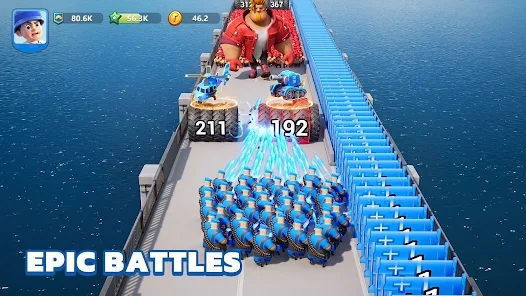Building Games vs. Casual Games: Which Offers More Creative Freedom?
The gaming industry is ever-evolving, with various genres offering unique experiences. Two popular categories that often veer into discussions about creativity are building games and casual games. While some argue that building games provide a vast canvas for creativity, others believe casual games hollow out more accessible and relaxed gameplay. In this piece, we explore their characteristics and how they cater differently to our imaginative instincts.
Understanding the Basics
Building games allow players to create and construct, often involving complex systems that enable players to design their environments, characters, or scenarios. Titles like Logic Puzzle Kingdom epitomize this genre, emphasizing both creativity and strategy.
On the flip side, casual games are generally easier to pick up and play without requiring extensive time or effort. They often feature simple mechanics that are easy to understand, making them ideal for a broad audience, including those looking for quick entertainment. Games like Candy Crush and FarmVille exemplify this type of gameplay.
Creative Freedom in Building Games
When it comes to creative freedom, building games undoubtedly have an edge. They offer players a sandbox—an open world where creativity knows no bounds. Here are a few aspects that contribute to their liberating nature:
- Endless Possibilities: Players can create anything they envision, from complex structures to entire worlds.
- Customization: Many building games allow for a high level of customization, enabling unique creations that reflect individual player styles.
- Problem-Solving: The need to devise solutions to build and create introduces an element of logical thinking and strategy.
For instance, in games like Delta Force Team, players can build tactical scenarios, showcasing their imaginative and strategic capabilities. This brand of creativity is rewarding and, often, more fulfilling than conventional gaming experiences.
How Casual Games Cultivate Creativity
While building games may reign supreme in creative freedom, casual games can also foster creativity, albeit in different ways. Their appeal lies in their ability to engage players quickly and with minimal mental strain. Casual games can boost creativity through:
- Accessibility: Their simplicity attracts a wider audience, including those who may not usually consider themselves gamers.
- Engagement: Casual games often utilize colorful graphics and compelling stories, sparking players' imaginations.
- Social Play: Many casual games encourage sharing of accomplishments on social media, inspiring creativity in others.
Though not as intensive, casual games can provide a creative outlet by letting players explore quick, fun experiences.
Comparative Analysis: Building vs. Casual Games
| Aspect | Building Games | Casual Games |
|---|---|---|
| Complexity | High | Low |
| Creative Control | Extensive | Limited |
| Time Investment | High | Low |
| Player Base | Dedicated Gamers | Wider Audience |
| Example Titles | Minecraft, SimCity | Angry Birds, FarmVille |
The Societal Impact of Each Genre
Not only do building games and casual games differ in their mechanics, but their impact on society is also noteworthy. Building games often encourage players to think critically and creatively, promoting skills like engineering, architecture, and design. They lay the groundwork for a generation that values creativity and innovation.
On the other hand, casual games play a role in strengthening social connections. They facilitate interactions between friends and family, enhancing the gaming experience through cooperative play or friendly competition. Casual games can create bonds as players work together or compete against each other, thus contributing to relationships beyond the pixelated world.
Conclusion: Finding the Balance
Ultimately, both building games and casual games hold their unique appeals. While building games offer extensive creative freedom and encourage deep engagement, casual games provide an accessible entry point that fosters social interaction and creativity in quick bursts. Depending on one’s preferences—whether a desire for intricate construction or seeking relaxed entertainment—either genre can satisfy creative urges.
So, what’s your take? Do you prefer the sprawling landscapes of building games, or do casual games capture your imagination in a different way? The choice largely depends on how you define creativity and the kind of experience you seek.



